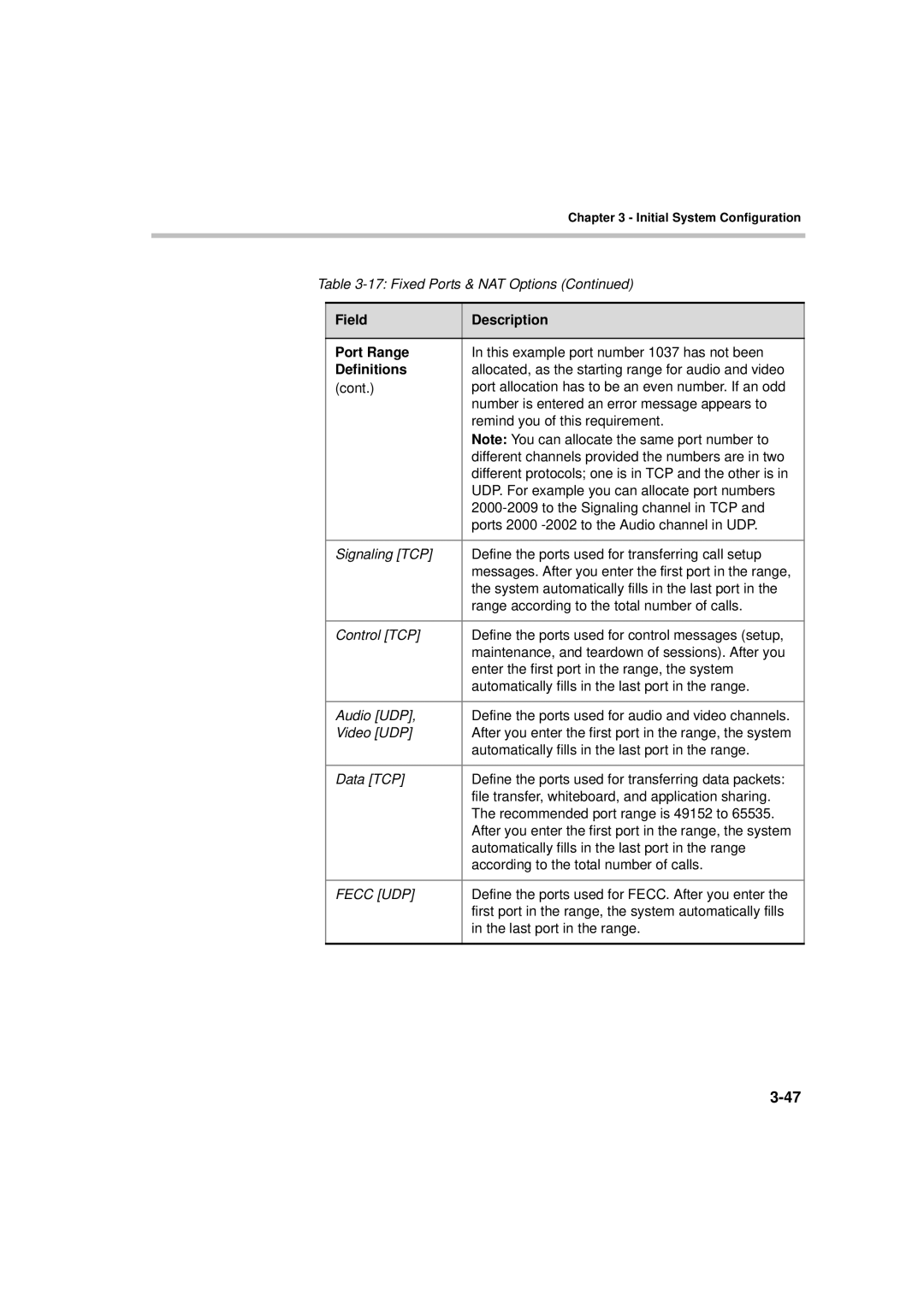Chapter 3 - Initial System Configuration
Table
Field | Description |
|
|
Port Range | In this example port number 1037 has not been |
Definitions | allocated, as the starting range for audio and video |
(cont.) | port allocation has to be an even number. If an odd |
| number is entered an error message appears to |
| remind you of this requirement. |
| Note: You can allocate the same port number to |
| different channels provided the numbers are in two |
| different protocols; one is in TCP and the other is in |
| UDP. For example you can allocate port numbers |
| |
| ports 2000 |
|
|
Signaling [TCP] | Define the ports used for transferring call setup |
| messages. After you enter the first port in the range, |
| the system automatically fills in the last port in the |
| range according to the total number of calls. |
|
|
Control [TCP] | Define the ports used for control messages (setup, |
| maintenance, and teardown of sessions). After you |
| enter the first port in the range, the system |
| automatically fills in the last port in the range. |
|
|
Audio [UDP], | Define the ports used for audio and video channels. |
Video [UDP] | After you enter the first port in the range, the system |
| automatically fills in the last port in the range. |
|
|
Data [TCP] | Define the ports used for transferring data packets: |
| file transfer, whiteboard, and application sharing. |
| The recommended port range is 49152 to 65535. |
| After you enter the first port in the range, the system |
| automatically fills in the last port in the range |
| according to the total number of calls. |
|
|
FECC [UDP] | Define the ports used for FECC. After you enter the |
| first port in the range, the system automatically fills |
| in the last port in the range. |
|
|
